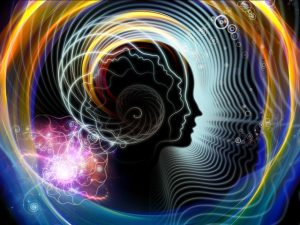Getting Unstuck from PTSD

One of the painful repercussions of Post Traumatic Stress Disorder (PTSD) is the experience of a lack of control that can occur when you feel trapped by feelings of anxiety, panic, overwhelm, or despair. Polyvagal theory, the work of Stephen Porges, Ph.D., offers a valuable framework for understanding and effectively responding to the intense emotional and physiological symptoms of PTSD.
“Healing the nervous system can take time and requires patience. Put the polyvagal theory into action in you life to increase your sense of freedom in body and mind”
-Dr. Arielle Schwartz
The Nervous System: A Basic Model

A basic model of the nervous system shows that we have two components of our nervous system, one that is under our conscious control (e.g. moving your hand) and another that functions without our awareness (e.g. regulating our body temperature). The portion of the nervous system that functions without our conscious awareness is called the autonomic nervous system (ANS). All of our emotional expressions are mediated by the ANS as it either mobilizes energy through our sympathetic nervous system or conserves energy through our parasympathetic nervous system.
- The sympathetic nervous system is associated with the fight or flight response and the release of cortisol (stress chemicals) throughout the bloodstream.
- The parasympathetic is associated with relaxation, digestion, and regeneration.
The sympathetic and parasympathetic nervous systems are meant to work in a rhythmic alternation that supports healthy digestion, sleep, and immune system functioning.
The Polyvagal Theory

Research by Dr. Stephen Porges offers an advanced understanding of the ANS, especially as related to trauma and PTSD. The autonomic nervous system is regulated by the vagus nerve or the tenth cranial nerve. The vagus nerve connects the brain to major systems in the body supporting mind-body communications.
Mammals have two vagal circuits, an evolutionarily older circuit called the dorsal vagal complex and a more recently evolved vagal circuit called the “ventral vagal complex” (VVC) which is also referred to as the “social nervous system.” The dorsal vagal complex connects to the organs underneath the diaphragm including the stomach, spleen, liver, kidneys, as well as the small and large intestines. The ventral vagal, social nervous system connects above the diaphragm to your heart, lungs, larynx, pharynx, inner ear, as well as the facial muscles around your mouth and eyes.
Broadly speaking, the vagus nerve is always associated with the parasympathetic nervous system and has an inhibitory influence upon the heart and sympathetic nervous system activity. Most importantly, Porges’ research identified that the parasympathetic nervous system has two presentations that depend upon whether you feel safe or feel threatened. In times of safety, the parasympathetic nervous system facilitates rest, relaxation, and digestion. However, in times of threat the parasympathetic nervous system has a defensive mode.
Biobehavioral Defenses
When we feel threatened, we will typically attempt to engage the social nervous system to re-establish a sense of connection and safety. If we are unable to create a safe, relational bond, we will progressively resort to evolutionarily older biobehavioral defense strategies. First, we will draw upon sympathetic nervous system actions such as fight or flight to mobilize us into self-protection. Here, you might feel shaky, anxious, or panicky.
If the sympathetic nervous system is unsuccessful in re-estabilishing safety, we will default to the evolutionarily oldest part of the vagus nerve, the “dorsal vagal complex” (DVC). This more primitive strategy engages the parasympathetic nervous system in an unrefined manner. Here, the parasympathetic nervous system engages immobilizing defensive strategies such as dissociation or fainting. Here, you might feel tired, dizzy, or nauseous.
The Vagal Brake
Both the dorsal vagal complex (DVC) and the ventral vagal complex (VVC) will exert inhibition on the sympathetic nervous system. Dr. Porges uses a metaphor suggesting that the vagus nerve is like pressing pressing the brake pedal when driving a car. Removal of the parasympathetic “vagal brake” causes an increase in heart rate and greater vulnerability to stress.
The social nervous system functions as a refined brake which has calming and soothing effects reflected in rhythmic oscillations in heart rate variability. This is associated with increases in health and emotional wellbeing. In contrast, the dorsal vagal complex acts like an abrupt vagal brake. Getting stuck in this dorsal vagal defensive strategy for long periods of time can have serious repercussions on mental and physical health.
The Social Nervous System
Your social nervous system (VVC) is strengthened by myelination. Myelination is a fatty coating on nerve pathways that is increased through repeated use and results in increased speed and control. You can imagine here the myelination that occurs in the learning of a new piece of music for the piano. Initially notes are played slowly and carefully but with repeated practice you begin to create music, eventually without reading the music at all. Likewise, the pathways of the social nervous system are strengthened through repeated practice. You know that you are in your social nervous system when you feel a warmth in your smile and see the sparkle in your eyes.
You can engage your social nervous system (VVC) to connect to others, feel playful, and relax into connection. If you feel unnecessarily keyed up with anxiety, you can use the social nervous system to identify that you are safe. You can look around and listen for cues of safety or engage in strategies such as calm, slow breathing to help you relax. All of these actions use the action systems above the diaphragm.
Once you know that you are safe, you no longer need to focus outward. This allows you to connect to the restorative side of your Dorsal Vagal Complex. Here, you can choose to immobilize into an experience of safety by relaxing into a hug with a loved one or resting into a nourishing meditation. It is also possible to blend your social nervous system with your sympathetic nervous system which facilitates your ability to engage in lively play.
In short, your social nervous system increases your ability to respond effectively when you feel keyed up with anxiety or shut-down with depression.
Mobilization into Play – Immobilization into Intimacy
Whether you are feeling anxiety or depression, you can use tools to engage your social nervous system to re-establish higher order nervous system functions.
If you are experiencing anxiety you are likely in fight or flight, a key defense reaction of sympathetic nervous system. Sympathetic actions involve mobilization; the need to move your body to release the build of stress cortisols. You can engage your social nervous by rubbing your hands together vigorously and making physical contact to your own face, neck, upper chest, arms, and legs. You can also explore physical movements that feel safe and grounding such as going for a walk or shaking your arms and legs to release stress. When we feel safe we can engage our social nervous system to use the energy of the sympathetic nervous system to dance, play, and laugh.
Feeling shut down, collapsed, depressed, or numb is an indication that you are in the defensive reactions of your parasympathetic nervous system which is characterized by immobilization. If you have a history of trauma it is possible that you are perceiving threats in your environment that are not actually occurring in the here and now. This is because a common symptom of PTSD is confusion between the past and the present. In this case, your social nervous system can help recognize that you are not in imminent danger. This allows you to access the positive, relaxing elements of your parasympathetic nervous system to “rest and digest.” When possible, turn towards a loving connection with a friend, caring partner, or a pet. Initially, you might need to make eye contact or call someone you trust and listen to the sound of their voice. You can also visualize a loving animal, friend, or protective ally to restore a felt sense of connection.
When you can embrace immobilization with safety, you can access the nourishment of the relaxation response.
Implications for Healing PTSD

The polyvagal theory in action can allow you to increase your sense of freedom in body and mind when experiencing symptoms of anxiety, panic, or depression. Here are some suggestions:
- Focus on the present moment
- Engage the sense of smell with an essential oil that brings a positive association or feeling
- Re-establish connection by calling a friend, snuggling with your pet, or loving self touch
- Express feelings through talking, writing, drawing, or movement
- Focus on your breath as a fine tuning mechanism to regulate the nervous system
- Engage in a mindfulness practice such as meditation or therapeutic yoga
- Allow yourself to play or get creative
- Focus on the good by tuning into the beauty around you
Therapeutic implications of Polyvagal Theory inform Somatic psychology and EMDR Therapy. Healing the nervous system can take time and requires patience with the process and with yourself. You are not failing when you feel anxious or depressed. You are also not alone. Put the polyvagal theory into action in you life to increase your sense of freedom in body and mind Further Reading:
- Natural vagus nerve stimulation
- Healing Complex PTSD and Dissociation
- Dr. Arielle Schwartz explores the relationship between Stress, PTSD, and your Health
- Reclaiming Pleasure
- EMDR case study
About Dr. Arielle Schwartz

Arielle Schwartz, PhD, is a psychologist, internationally sought-out teacher, yoga instructor, and leading voice in the healing of PTSD and complex trauma. She is the author of five books, including The Complex PTSD Workbook, EMDR Therapy and Somatic Psychology, and The Post Traumatic Growth Guidebook.
Dr. Schwartz is an accomplished teacher who guides therapists in the application of EMDR, somatic psychology, parts work therapy, and mindfulness-based interventions for the treatment of trauma and complex PTSD. She guides you through a personal journey of healing in her Sounds True audio program, Trauma Recovery.
She has a depth of understanding, passion, kindness, compassion, joy, and a succinct way of speaking about very complex topics. She is the founder of the Center for Resilience Informed Therapy in Boulder, Colorado where she maintains a private practice providing psychotherapy, supervision, and consultation. Dr. Schwartz believes that that the journey of trauma recovery is an awakening of the spiritual heart.
- The Complex PTSD Workbook: A Mind-Body Approach to Regaining Emotional Control and Becoming Whole (Althea press, 2016)
- EMDR Therapy and Somatic Psychology: Interventions to Enhance Embodiment in Trauma Treatment (Norton, 2018).
- The Post-Traumatic Growth Guidebook: Practical Mind-Body Tools to Heal Trauma, Foster Resilience, and Awaken your Potential (Pesi Publications, 2020)
- A Practical Guide to Complex PTSD: Compassionate Strategies for Childhood Trauma (Rockridge Press, 2020)
- The Complex PTSD Treatment Manual: An Integrative Mind-Body Approach to Trauma Recovery (Pesi Publications, 2021)
- Trauma Recovery: A Mind-Body Approach to Becoming Whole (Sounds True, 2021)
- Therapeutic Yoga for Trauma: Applying the Principles of Polyvagal Theory for Self-Discovery, Embodied Healing, and Meaningful Change (Pesi Publications, 2022)








